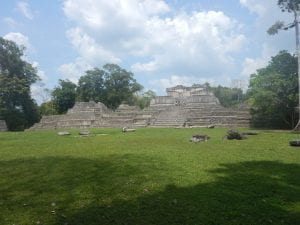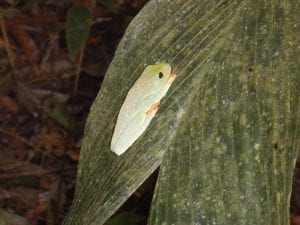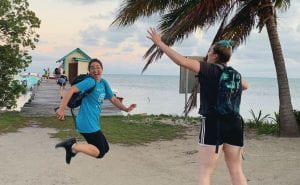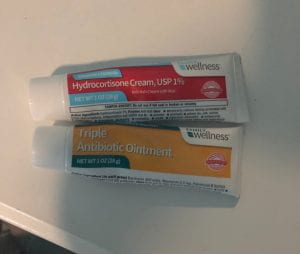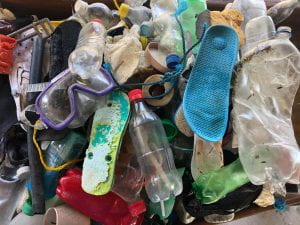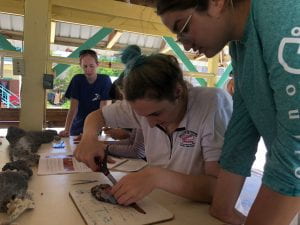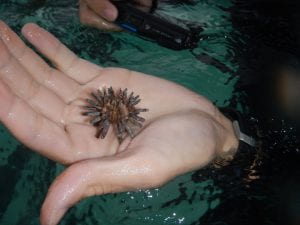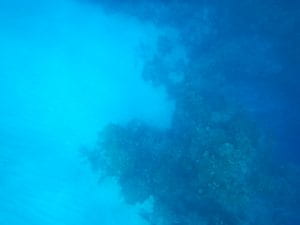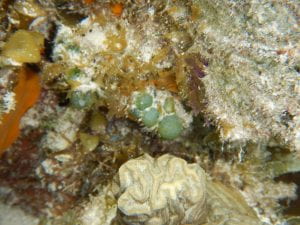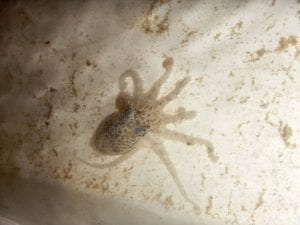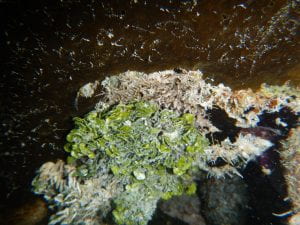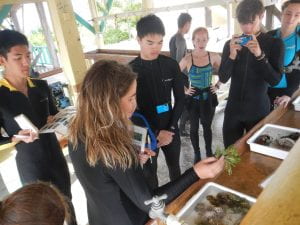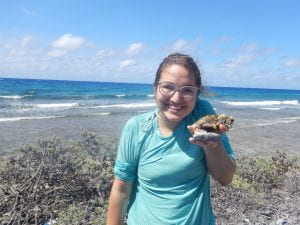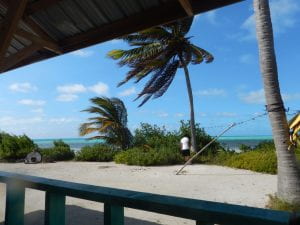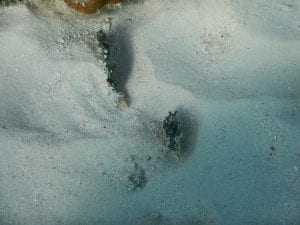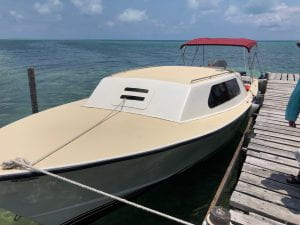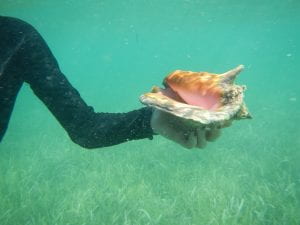Today we had another early start as we had a lot planned and far to travel. We ate breakfast at the lodge we stayed and I got to try a Belizean specialty called Fried Jacks, which are kind of like a less sweet beignet, along with others staples like refried black beans, watermelon juice, and some sort of cheese. We all loaded back into the van and headed further along the gravel road until we reached a waterfall with pools formed in the granite rocks called Rio en Pools. While there we got to swim and play in the waterfalls, as well as observe the mountain pine region close up. While walking to the falls, our group found a super tiny toad which I identified as a Gulf Coast Toad, a pretty common species in the area. We also found a basilisk lizard, which is noteworthy for the funny way it runs and the fact that it can run across water (though sadly, we did not witness this feat).
After our swim, we drove about an hour to the Caracol Mayan ruins. I was amazed by the huge size of the buildings, as well as the fact that you are allowed to climb up the stairs of the exposed buildings and the fact that ancient pottery was just littered about. Also, we climbed the tallest ruin which is actually the tallest building in Belize and was built in 650 AD! We could even see the border of Guatemala from up there because of the deforestation line. My favorite parts of our tour included seeing Montezuma’s Oropendola birds (which make these interesting hanging sack-like nests to protect their eggs from snakes) and getting to see a whole bunch of black howler monkeys above us in the rainforest (including a baby!).
After we finished at Caracol, we rode to our final destination- Las Cuevas Research Station and arrived right as it started to pour. Perhaps the dry season won’t be as dry as we thought. After the rain stopped, we got to see a Scarlet Macaw up in the canopy (except Keegan who didn’t believe us until it was too late). I didn’t see any amphibians after the rain, but I’m excited to see some tomorrow when we head out into the Chiquibul for the first time since it is (hopefully) an early start to the wet season!
